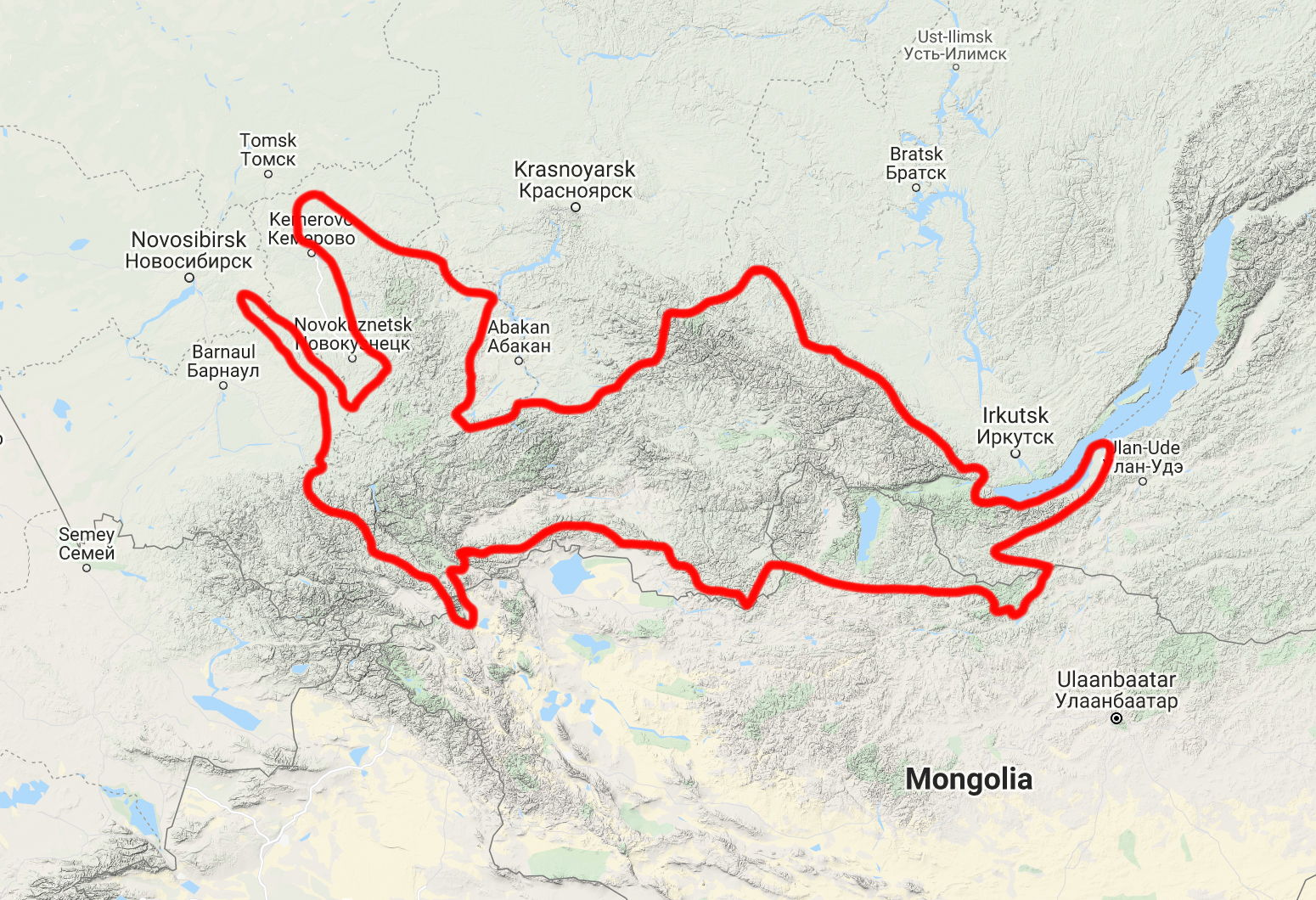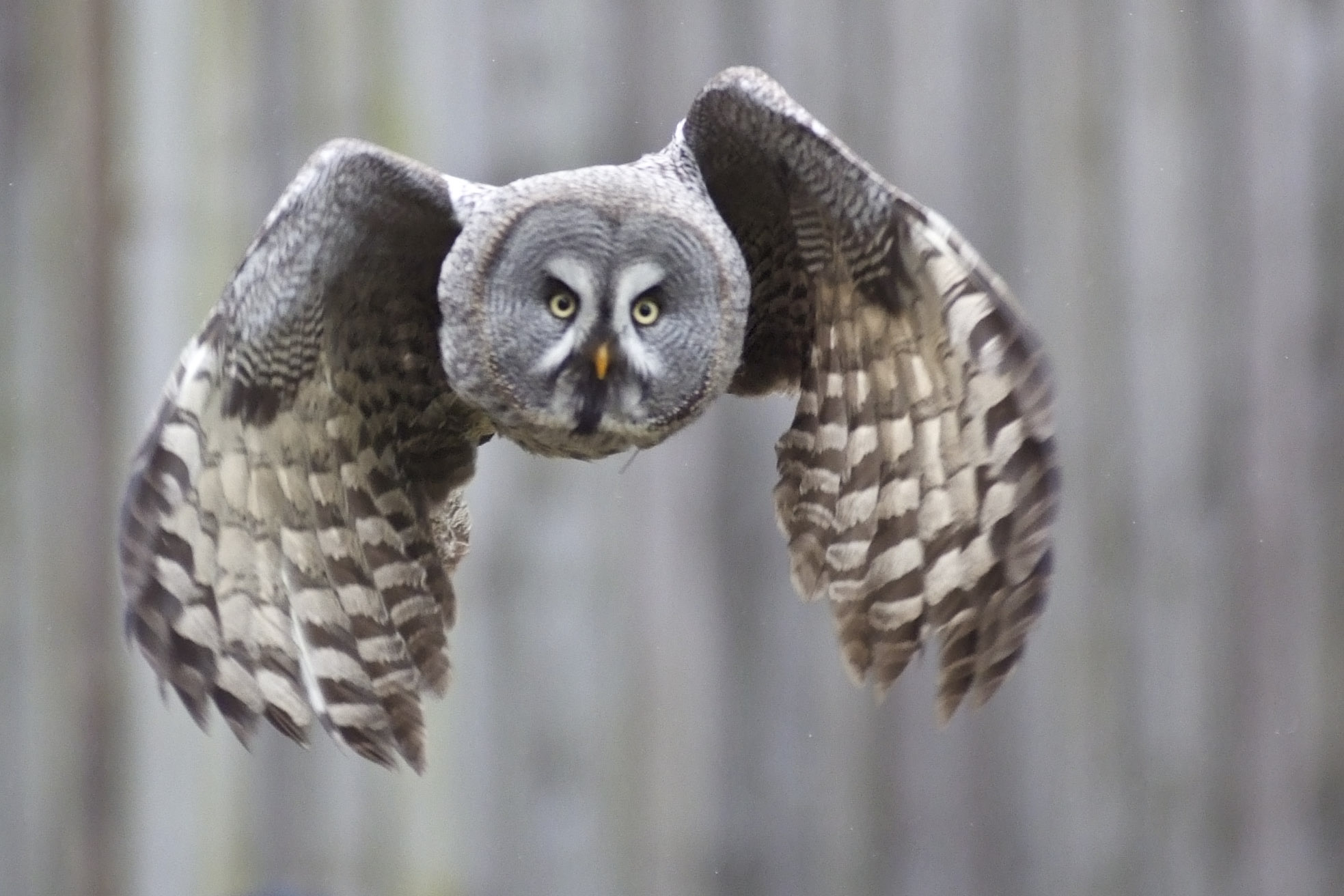Great grey owl: the night predator of snowy landscapes
- Nature Conservation
- Land Conservation
- Iconic Species
- Wildlife
- Birds
- Altai-Sayan Mountains
- Central Eurasia Realm
One Earth’s “Species of the Week” series highlights an iconic species that represents the unique biogeography of each of the 185 bioregions of the Earth.
In the snowy, desolate regions of the Northern Hemisphere, across Canada, Siberia, and dipping into the Mongolian steppe, massive wings soar silently over the frozen landscape. The great grey owl is known by many names, cinereous owl, spectral owl, Lapland owl, spruce owl, bearded owl, sooty owl, and the ominous ‘Phantom of the North.’ Piercing yellow eyes sunk deep into their grey and white facial plumage, adding to their mysterious nature.
Deep, rhythmic whoos across the otherwise silent forest complete this haunting picture. However, despite the personification and lore of the locals, great grey owls are mostly non-aggressive and provide essential pest control to their ecosystem.

The great grey owl is the Iconic Species of the Sayan Mountain Conifer Forests, Alpine Meadows & Steppe bioregion (PA36).
Great grey owls are the world's largest species of owl by length. Their bodies can weigh up to 1,900 g (4.19 lb) and measure 84 cm (33 in) long, but their wingspan can exceed 1.52 m (5 ft). As with most owl species, females are slightly larger than males. Both genders have grey feathers with white patterned bars streaking through them. Their large round heads have a distinct circular pattern surrounding their eyes, and below their bright, yellow beak is a pure white tuff or "bow-tie."

These large facial feathers focus sound and allow the great grey owl to be an alpha predator in their ecosystem. Mainly hunting at night and near dawn and dusk, these birds wait at a low listening spot like a stump, tree limb, or fence post. They can hear prey moving beneath 60 cm (2.0 ft) of snow and, upon locating, will swoop down and plunge into the drift.
Their diet relies upon available small rodents like mice and gophers with the occasional hare, mole, shrew, and weasel. Great grey owls play an important role in their environment by controlling these small animal populations.
Benefitting from other species in the forest, great grey owls do not build their nests but rather use abandoned ones. Breeding occurs from March to May, and four eggs are typically laid. Owlets hatch after 30 days and spend 2 to 3 weeks in the nest.
After this time, the young jump or fall from the nest to explore their world, and then the white, fuzzy young must use their beaks and feet to climb back into trees. Finally, they learn to fly after an additional 1 to 2 weeks; by winter, they are on their own.
The abundance of food affects the number of eggs a female lays, and in years when small mammal populations are very low, the great grey owl may not attempt nesting. Drought, deforestation, and global temperature rise also keep the great grey owl from mating as food and habitat become scarce.
Explore Earth's Bioregions


